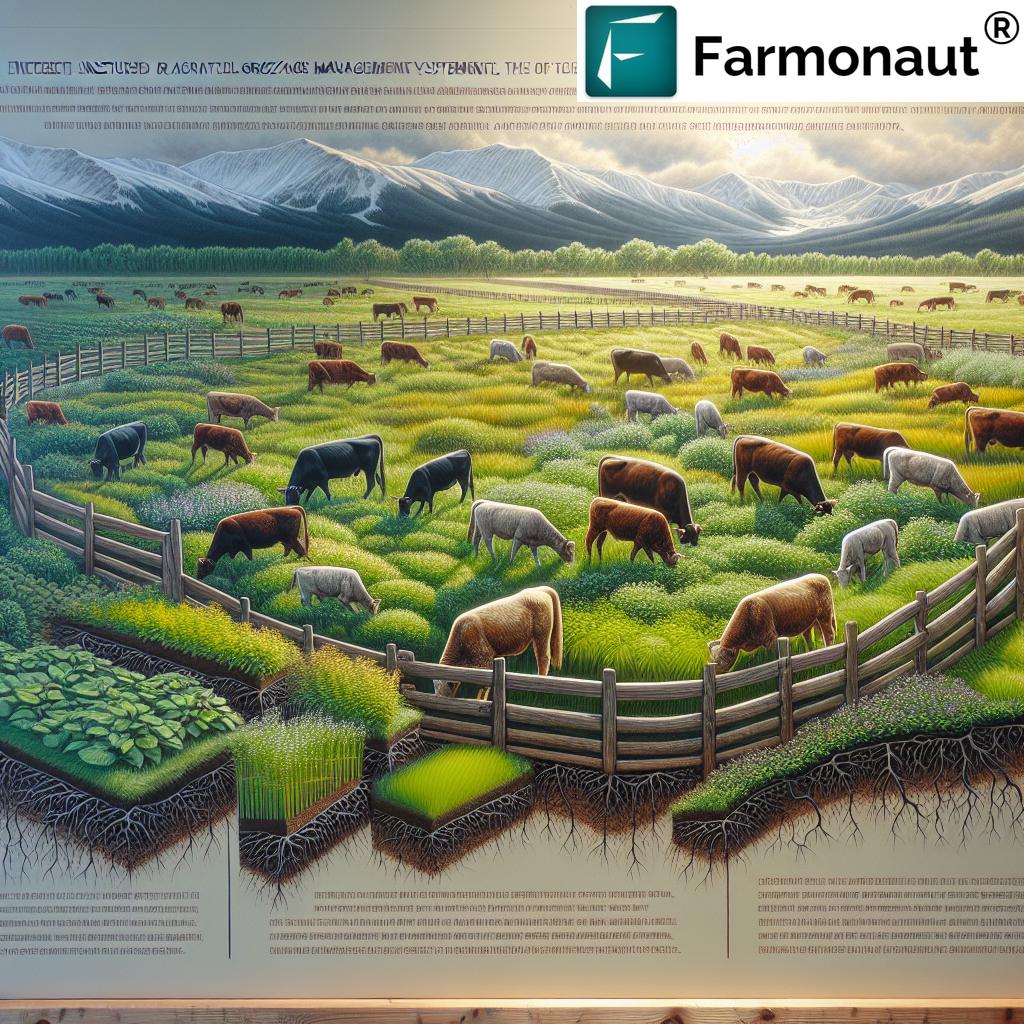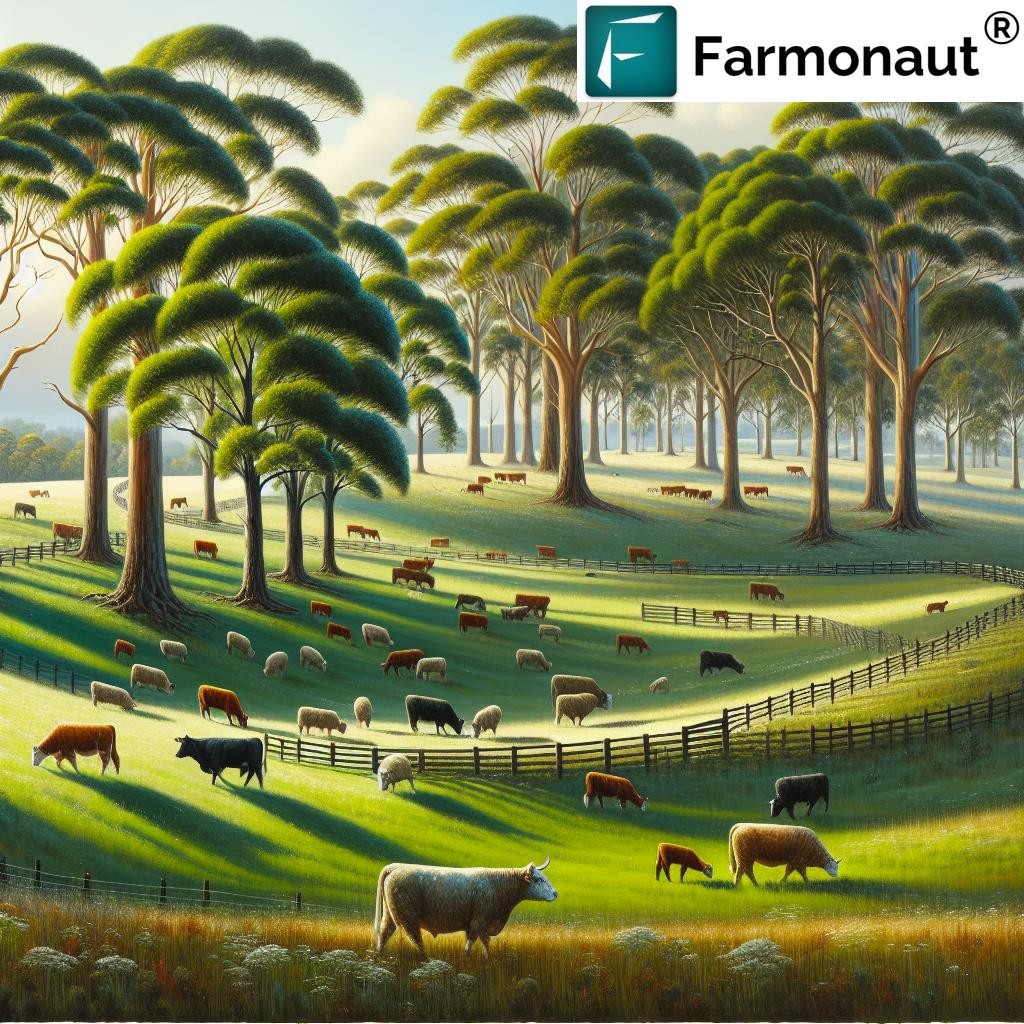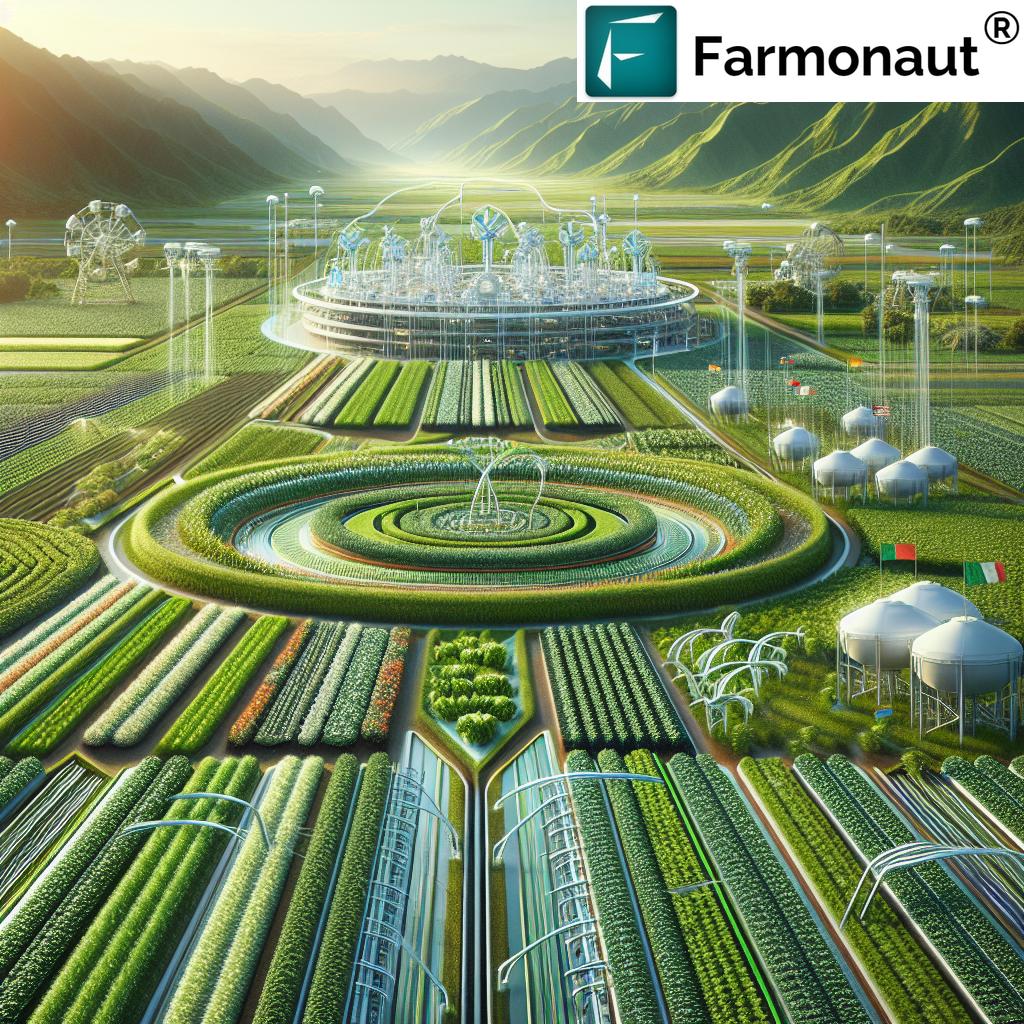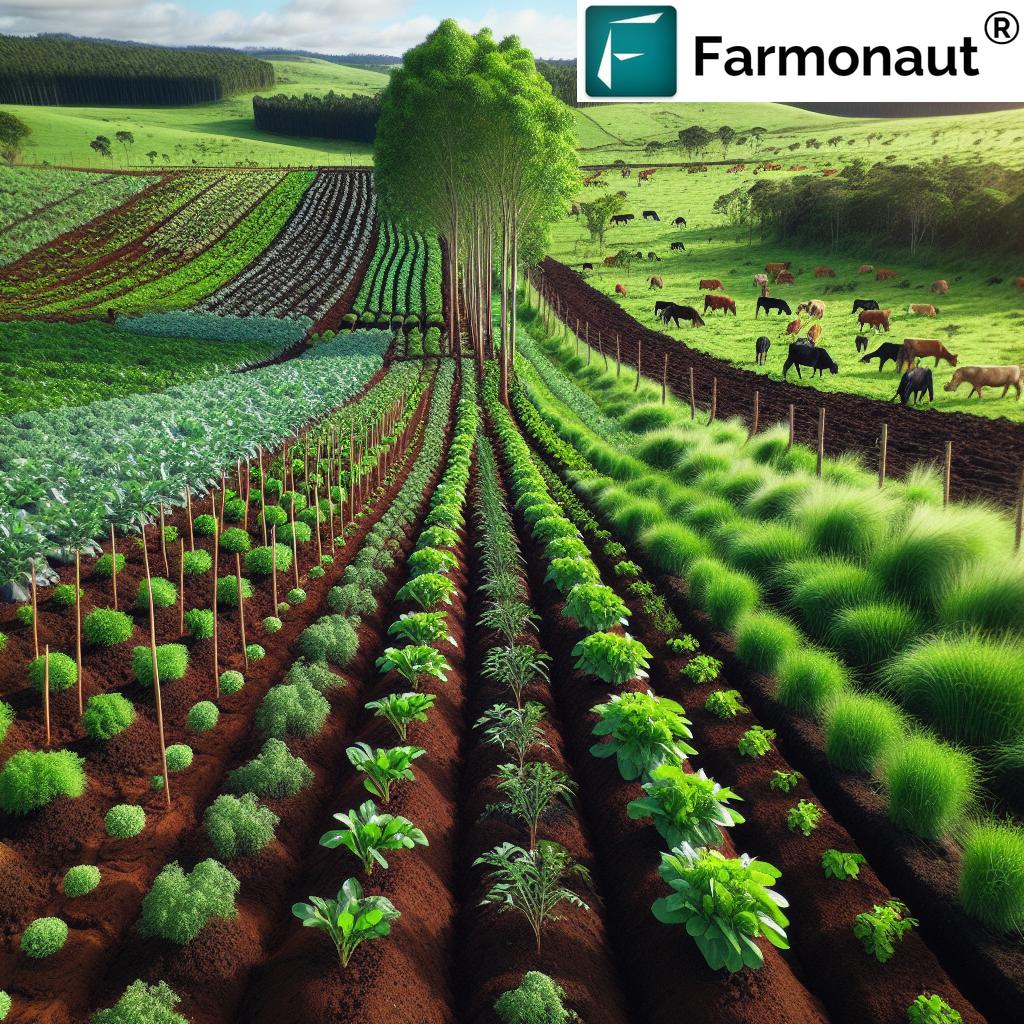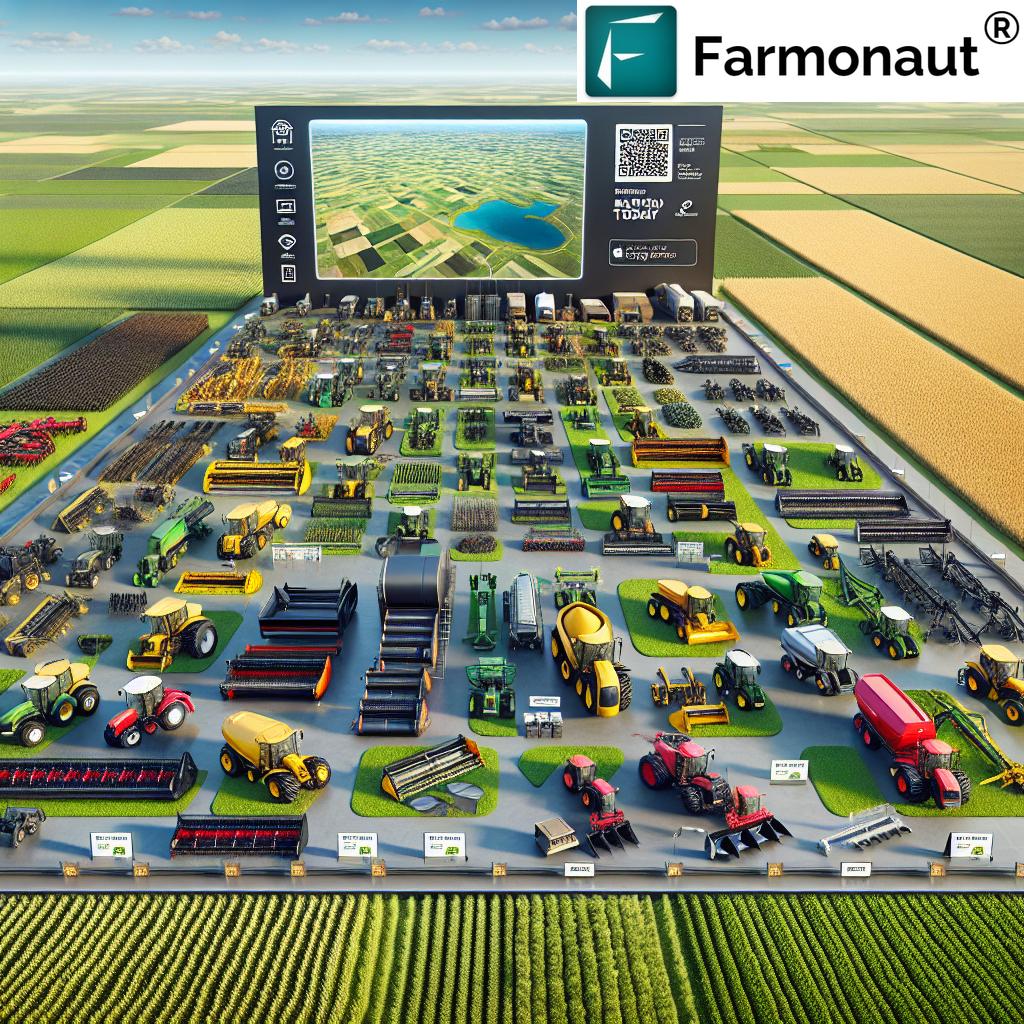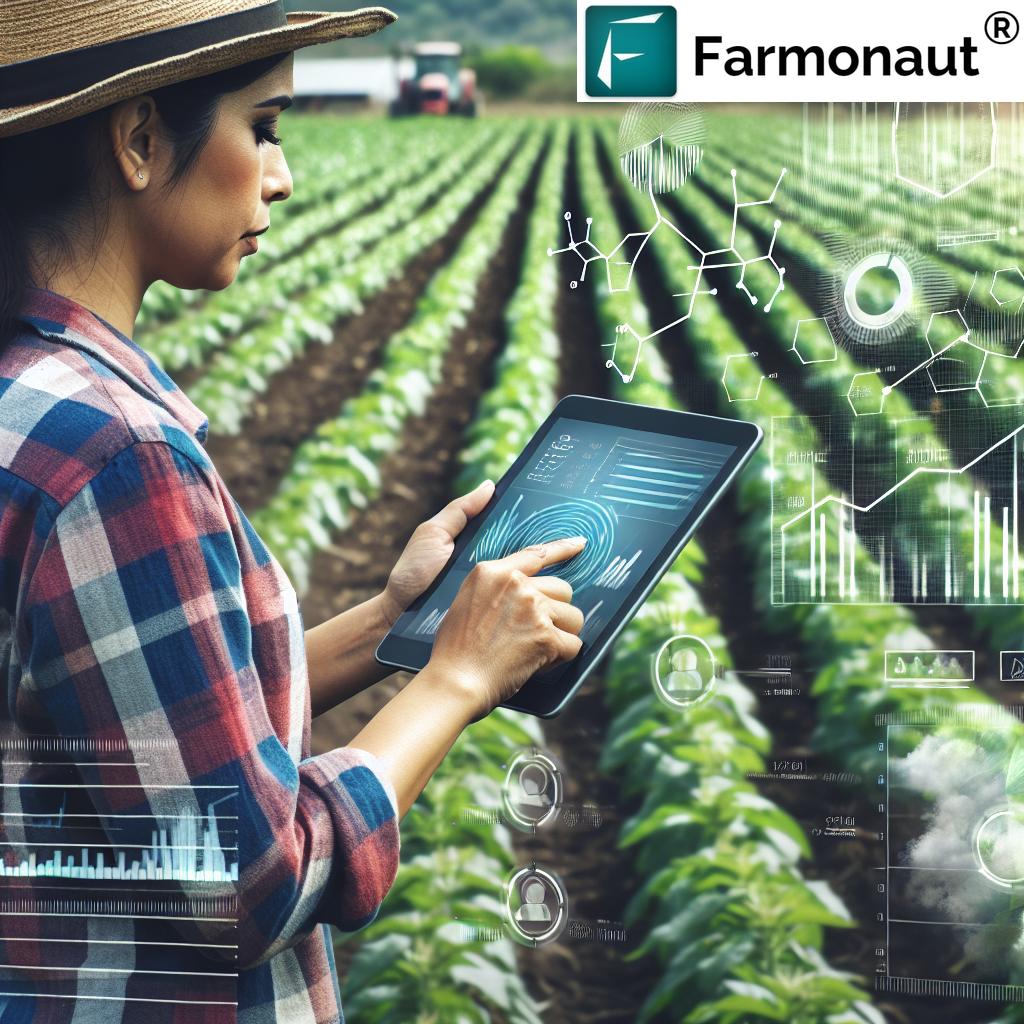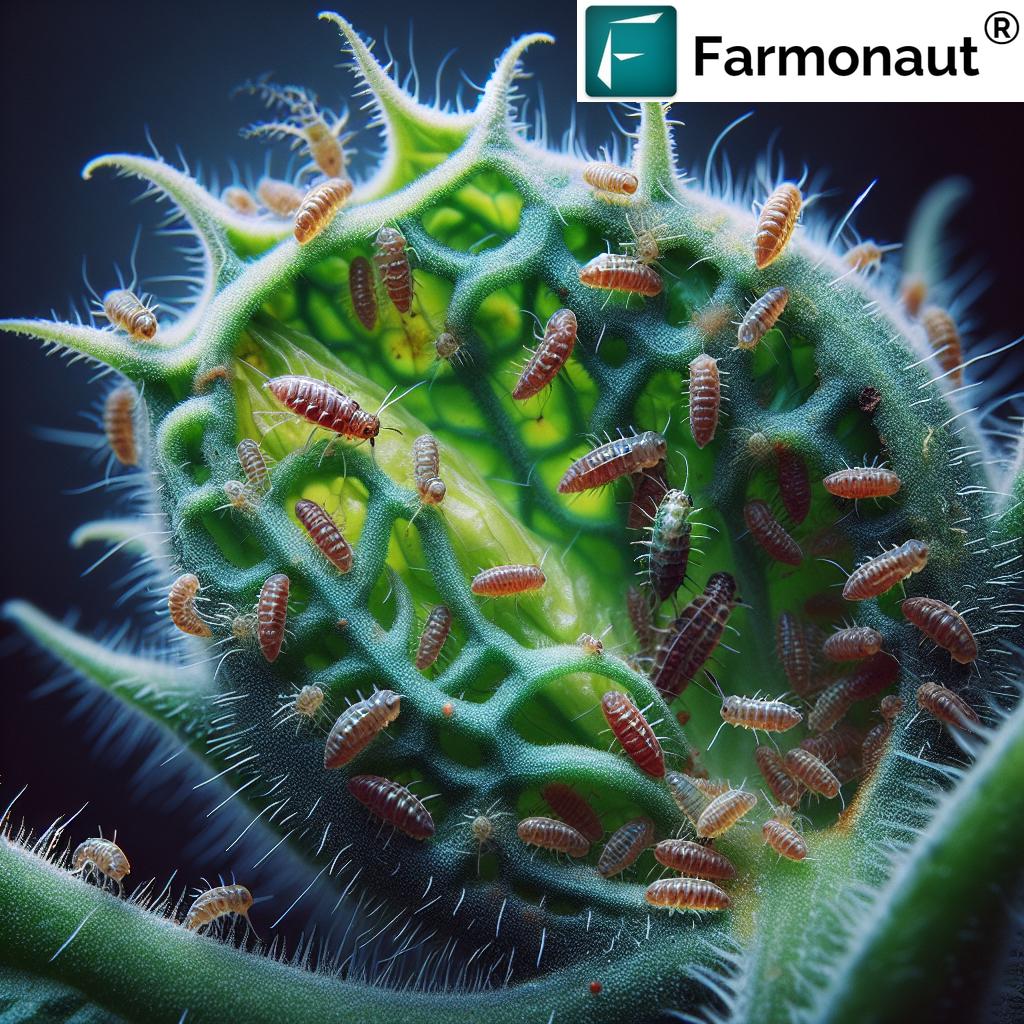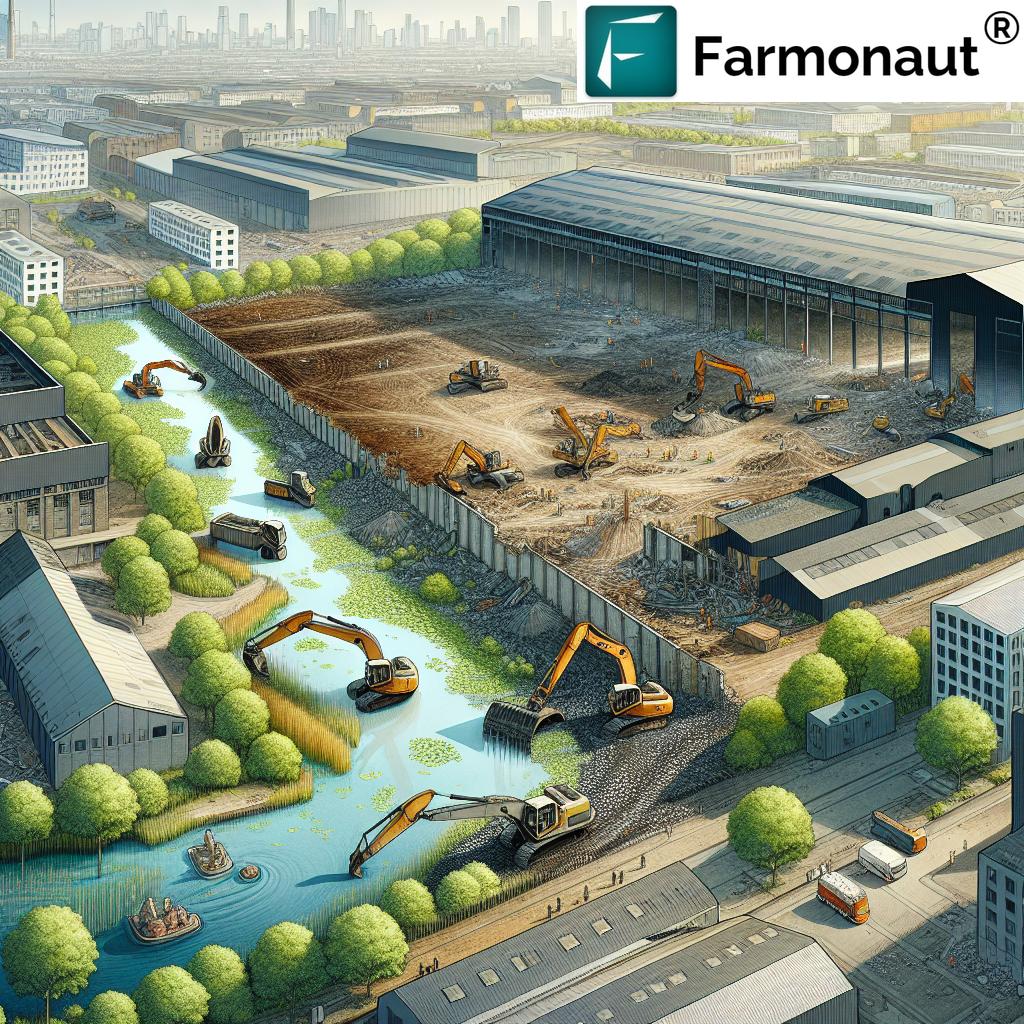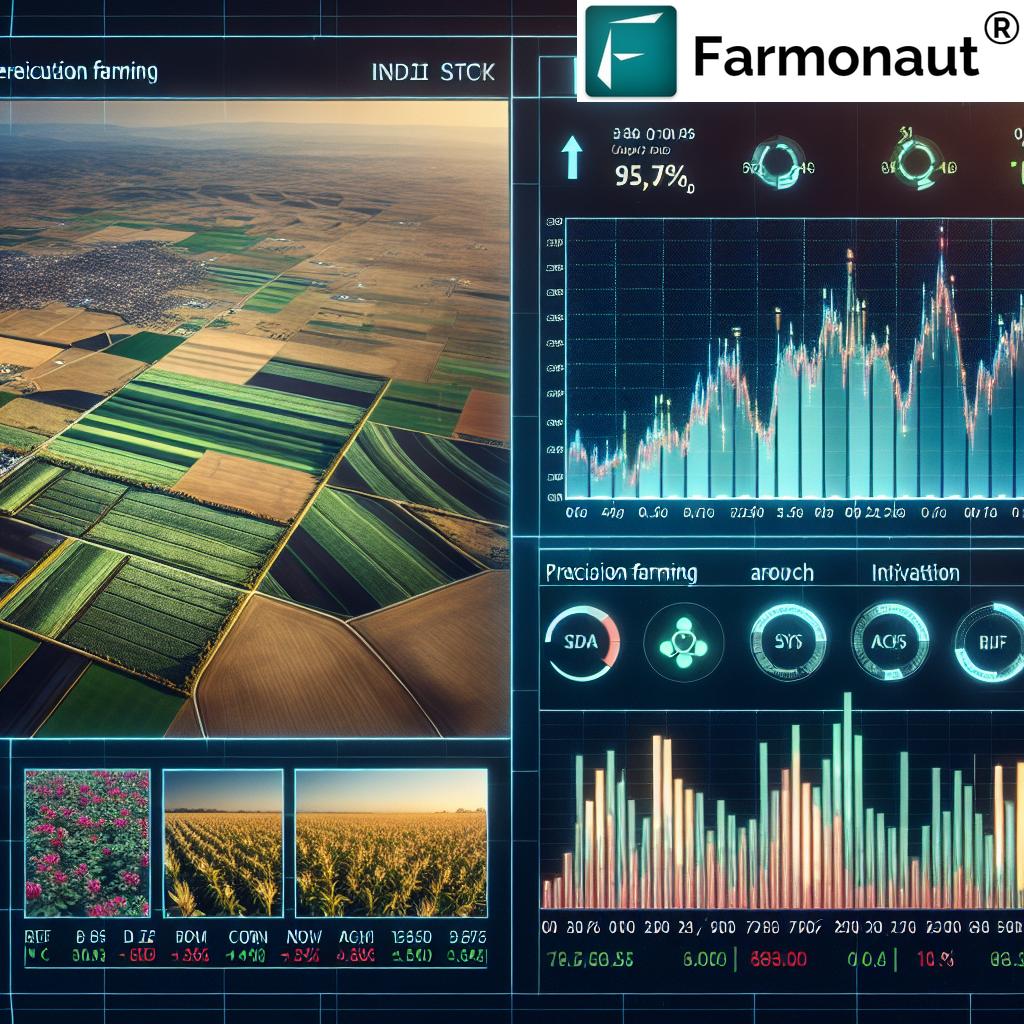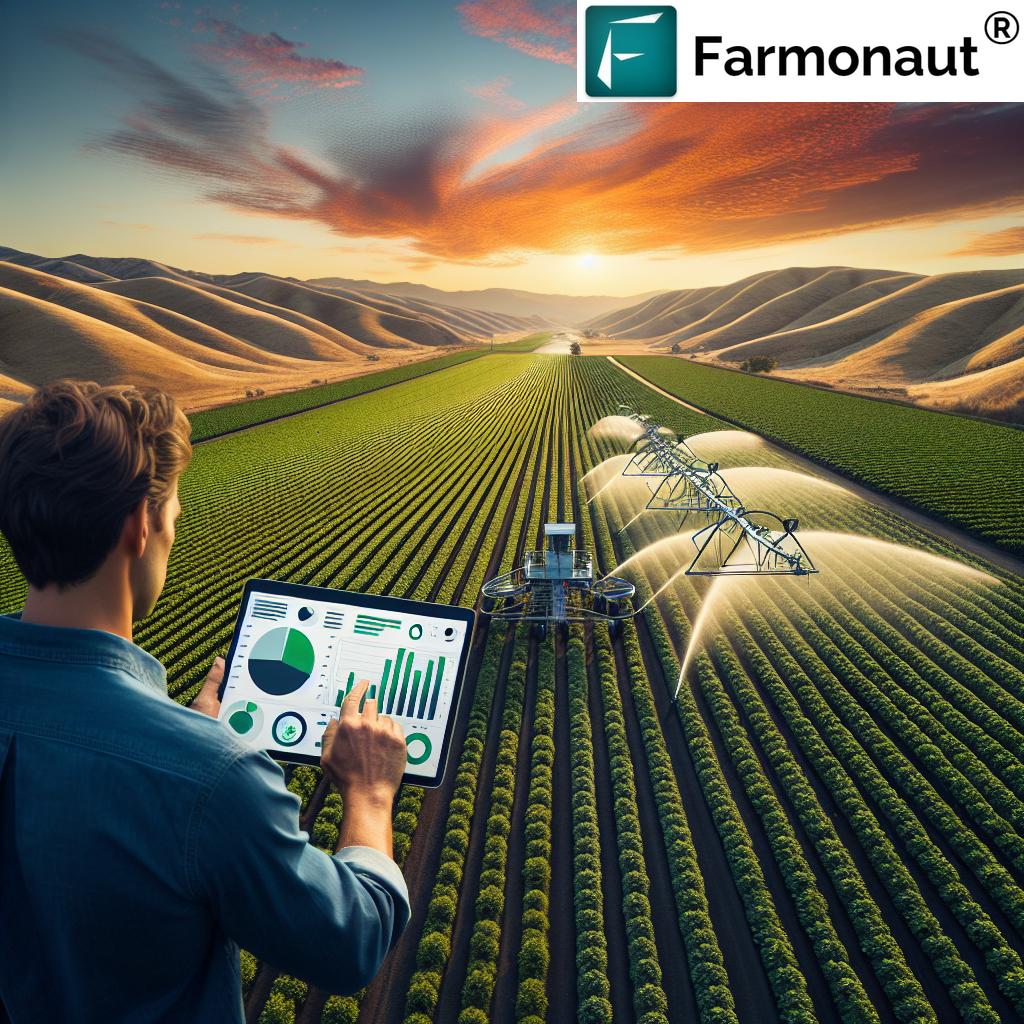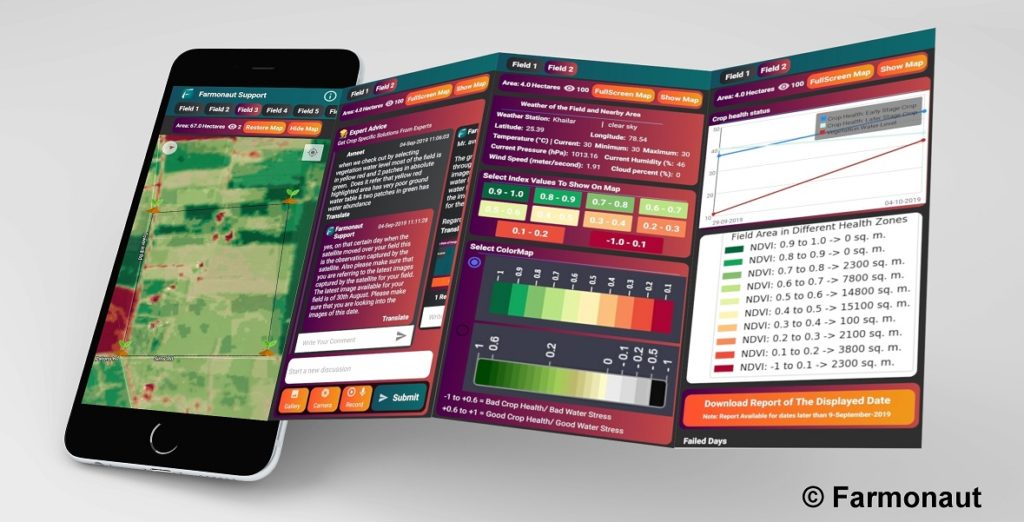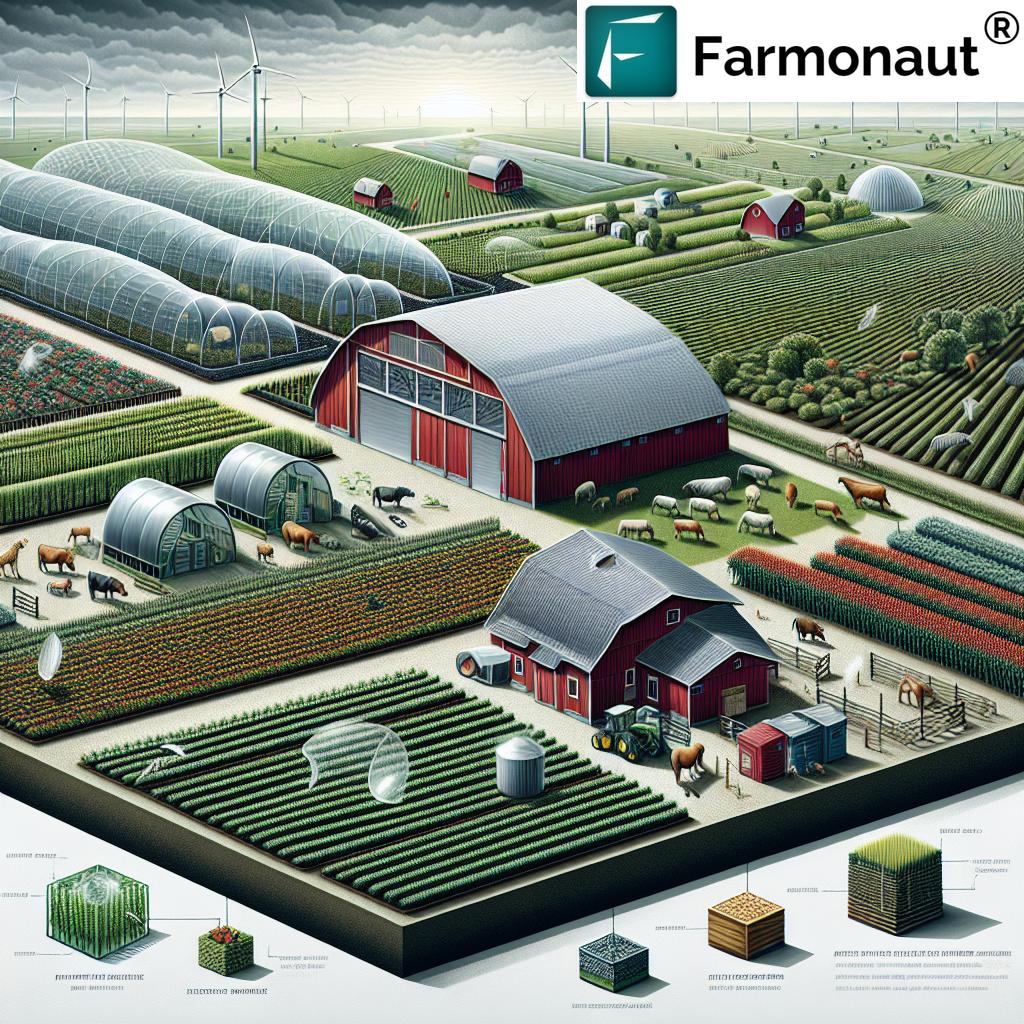Rotational Grazing: 7 Shocking Benefits Revealed!
Rotational grazing is revolutionizing the way we think about livestock management, pasture sustainability, and agricultural profitability. This method, which involves moving animals systematically across different paddocks, unlocks a wealth of environmental and economic advantages. Unlike continuous grazing—where animals are left to graze the same area, leading to overgrazing and eventual land degradation—rotational grazing ensures pastures get the rest and regrowth they desperately need.
We’re about to reveal the 7 shocking benefits—from improved soil health and water conservation in grazing, to increases in productivity and biodiversity in grazing systems. If your mission is to enhance forage quality, reduce costs, boost ecological resilience, or maximize carbon sequestration in agriculture, this comprehensive guide is for you!
At Farmonaut, our goal is to empower farmers, ranchers, and land managers worldwide with data-driven, satellite-powered farm management that makes these benefits not just possible, but practical—regardless of your farm’s size.
“Rotational grazing can increase pasture productivity by up to 30% compared to continuous grazing systems.”
Principles of Rotational Grazing: The Foundation of Sustainable Pasture Management
At its core, rotational grazing is a sustainable pasture management practice that divides pastures into multiple, smaller paddocks. Livestock are rotated through these paddocks, allowing pastures periods of rest and regrowth. This cycle not only rejuvenates forage plants but also optimizes livestock forage quality, enhances plant diversity, and upholds soil structure.
- Subdividing pastures: Dividing grazing areas into 4–16 or more paddocks, depending on size, climate, and herd.
- Resting paddocks: After animals graze one area, that paddock is rested to allow plants to regenerate and root systems to deepen.
- Adjustable duration: The period animals remain in one paddock (grazing period) and its rest period depend on factors like growth rates, forage species, season, and weather conditions.
- Monitoring and planning: Success involves monitoring forage growth, adjusting systems as needed, ensuring livestock health, and maintaining water and fencing infrastructure.
This method contrasts sharply with continuous or set stocking, where animals graze the same area for weeks or months, often resulting in overgrazing, loss of soil organic matter, and degraded forage quality.
Rotational Grazing vs. Conventional Grazing: Quantitative Impact Comparison
| Benefit (Focus Keyword) | Conventional Grazing (Estimated Value) | Rotational Grazing (Estimated Value) | Impact Explanation |
|---|---|---|---|
| Soil Organic Matter Increase (%) | 0–5% | 15–30% | Improved plant cover and organic matter inputs increase soil health and fertility. |
| Forage Yield Improvement (%) | 0–10% | +30% | Regular rest and regrowth cycles support higher forage productivity. |
| Biodiversity Increase (No. of Species) | 5–10 species | 15–25 species | Varied grazing supports more plant, insect, and wildlife diversity. |
| Water Retention Improvement (%) | 0–15% | 30–50% | Enhanced root mass and organic matter improve soil’s water-holding capacity. |
| Livestock Productivity (kg/ha) | 600–900 | 900–1200 | More nutritious forage leads to healthier, more productive livestock. |
| Reduction in Soil Erosion (%) | 0–10% | 30–70% | Continuous cover and deeper roots prevent erosion and compaction. |
| Fertilizer Input Reduction (%) | 0–15% | 30–60% | Better nutrient cycling and manure distribution decrease external input needs. |
Unlocking Soil Organic Carbon: The Secret to Sustainable Farming with Farmonaut
7 Shocking Benefits of Rotational Grazing
Let’s explore the environmental and economic advantages of rotational grazing—backed by proven research and aligned with sustainable pasture management principles. The transformation this grazing system can bring to our lands, water, livestock, and farm economics is—quite literally—shocking!
1. Soil Health Improvement: Building the Foundation of Productive Pastures
- Deeper Root Systems: Allowing rest periods between grazing events promotes deeper, more robust root systems in forage plants, improving soil structure and resilience (source).
- Soil Fertility: The decomposition of root biomass adds new organic matter, fueling nutrient cycling and microbial diversity.
- Reduced Soil Erosion and Compaction: Continuous grazing leads to exposed soil, erosion, and compaction. However, rotational grazing maintains ground cover, prevents compaction, and protects from erosion.
- Better Water Retention: Enhanced organic matter increases water-holding capacity—essential for resilience during drought or heavy rainfall.
By managing grazing for optimal plant growth and rest periods, we improve soil health. This directly boosts productivity and ecosystem resilience on our farms.
Farmonaut’s Carbon Footprinting product empowers us to monitor soil carbon changes, ensuring our efforts towards improving soil health and carbon sequestration in agriculture deliver tangible results!
Farmonaut | How to Download Weather Data
2. Enhanced Biodiversity in Grazing Systems: Supporting Ecosystems Above and Below Ground
- Plant Species Diversity: By alternating high and low grazing pressures, more plant species—including those with varied growth habits—can thrive (source).
- Wildlife Habitat Provision: Diverse swards mean food, cover, and nesting sites for pollinators, birds, and beneficial insects.
- Ecological Balance: Reduced dominance of single species prevents pest outbreaks and encourages beneficial insects.
With rotational grazing, we’re not just managing livestock forage—we’re supporting entire ecosystems, promoting biodiversity in grazing systems for future generations.
Farmonaut’s product traceability tools verify and document sustainable farming practices, including biodiversity outcomes, which is especially critical for premium eco-labeled products.
Farmonaut® | 90-95% Accuracy in Organic Carbon Data From Farmonaut
3. Carbon Sequestration in Agriculture: Fighting Climate Change with Every Rotation
- Increased Soil Carbon: Rested and vigorously growing forage sequesters more carbon dioxide in plant roots and aboveground tissues (source).
- Long-Term Benefits: Regular inputs of organic matter from manure and plant decay act as a stable carbon sink, reducing greenhouse gases.
- Measurement and Tracking: With tools like Farmonaut’s carbon & GHG tracking, we can monitor carbon gains field by field.
Carbon sequestration in agriculture is not just climate-friendly but also forms the bedrock of sustainable pasture management and regenerative agriculture.
4. Water Conservation in Grazing: Optimizing Every Drop
- Infiltration & Retention: Healthy soils with deep roots and plenty of organic matter retain water better and reduce surface runoff (source).
- Resilience to Drought and Flood: Fields managed with rotational grazing and improved water conservation in grazing systems withstand dry spells and intense rain events with greater productivity.
- Lower Water Costs: Reduced need for irrigation and fewer water infrastructure challenges.
With satellite and moisture monitoring—like insights available via Farmonaut’s crop plantation and forest advisory solution—we can track and react to water stress in our fields in real-time.
5. Cost Savings & Economic Advantages of Rotational Grazing
- Lower Feed Expenses: Increased forage yield means decreased reliance on external feed, keeping livestock healthy and productive on homegrown pasture.
- Reduced Fertilizer and Vet Costs: Natural nutrient cycling and improved animal health—due to better-quality forage and cleaner grazing environments—reduce overall expenses (source).
- Efficiency via Technology: Leveraging tools like Farmonaut’s fleet management and large-scale farm management app helps us coordinate livestock movement and optimize labor for rotational grazing.
Over time, rotational grazing reduces external inputs and increases profitability—solid economic and environmental win!
Farmonaut Web app | Satellite Based Crop monitoring
6. Increased Livestock Productivity: Healthier Animals, Better Returns
- Improved Livestock Forage Quality: Forage regrowth after rest periods is more nutritious, supporting higher weight gain, improved reproduction, and milk yields (source).
- Healthier Animals: Reduced parasite loads (from moving animals regularly), better nutrition, and fewer health issues lower veterinary costs and increase returns.
- Consistent Output: Well-managed paddocks ensure reliable forage supply, even during challenging growing seasons.
Data-driven decision making, enabled by Farmonaut’s API and monitoring platforms, further enhances consistent gains in productivity. Integrate with your management systems via our API and receive farm-specific advice from the Farmonaut Jeevn AI system!
Find documentation here: Farmonaut Satellite & Weather API Developer Docs
7. Land Value Appreciation: Rotational Grazing for the Next Generation
- Land Quality: Implementing rotational grazing enhances land productivity, improves soil fertility, and increases resilience, making property more desirable (source).
- Marketability: Diverse, healthy pastures and sustainable ecological management boost appeal to eco-conscious buyers and support potential premium product marketing.
- Risk Mitigation: Healthier systems are more robust to environmental shocks, supporting long-term farm success.
“Biodiversity in rotationally grazed pastures is shown to be 50% higher than in conventionally managed fields.”
Rotational Grazing & Silvopasture Integration: Agroforestry for Sustainability and Profit
Silvopasture integration combines the principles of rotational grazing with the introduction of trees, forage, and animals within one system (source). This offers several layers of benefit:
- Diversified Income Streams: Timber, nuts, fruits, and livestock products—all from one area.
- Improved Animal Comfort: Trees provide shade, windbreaks, and microclimate benefits, boosting livestock health and forage quality.
- Carbon & Soil Health: Greater carbon sequestration potential, enriched soil through diverse organic matter input, and ecological resilience.
Agroforestry and rotational grazing systems, when combined, powerfully reinforce one another—making our land more sustainable and our systems more adaptable.
How to Implement Rotational Grazing: Key Considerations and Planning
Transitioning to rotational grazing is transformative, but it requires investment, knowledge, and continuous monitoring. Here’s how we can ensure success:
-
Infrastructure Setup:
- Install fencing (electric or permanent) to subdivide fields into paddocks.
- Develop water systems (troughs, piping) ensuring every paddock provides adequate water.
-
Pasture Management:
- Monitor forage growth rates regularly using satellite-based solutions and visual assessment.
- Adjust grazing and rest periods as needed for plant recovery and optimal yield.
- Utilize Farmonaut’s multispectral monitoring for soil moisture, crop health, and regrowth analytics.
-
Animal Health Monitoring:
- Track livestock health, body condition, and any signs of stress or parasite load.
- Adopt AI-driven advisory systems (like Farmonaut’s Jeevn AI) for custom livestock and crop management tips.
-
Planning and Record-Keeping:
- Maintain detailed grazing schedules, paddock histories, and productivity metrics.
While initial costs can be substantial, the payoff in improved productivity, sustainability, and profitability is significant over time.
Challenges and Considerations in Rotational Grazing Systems
- Labor Demands: Frequent livestock movement, monitoring, and flexible management are more labor-intensive—though automated alerts and remote monitoring (via Farmonaut’s platform) can help ease this challenge.
- Initial Investment: Paddock establishment, fencing, and water supply systems can require considerable upfront capital.
- Knowledge & Training: A solid grasp of forage growth patterns, livestock needs, and ecological cycles is essential. We encourage working with local extension services or leveraging smart advisory solutions such as Farmonaut’s Jeevn AI Advisory.
- Adaptation Period: Get ready for a learning curve as both plants and animals adjust to new cycles.
Addressing these considerations with robust planning, monitoring, and technology integration ensures long-term success in our grazing management systems.
Optimizing Rotational Grazing Management with Farmonaut’s Advanced Technologies
Precision, data-driven resource management is at the heart of modern sustainable livestock systems, and Farmonaut leads the way. Here’s how Farmonaut supercharges our rotational grazing and sustainable management goals:
- Satellite Crop & Pasture Monitoring: Real-time, multispectral imagery gives insight into NDVI, soil moisture, and pasture growth rates—helping us time movements, plan rest periods, and combat overgrazing.
- AI-Driven Farm Advisory (Jeevn AI): Delivers customized advice for pasture improvement, animal health, water conservation, and carbon tracking.
- Blockchain Traceability: Transparent record-keeping to validate sustainable practices for buyers, regulators, and certification bodies.
- Fleet, Resource & Area Management: Efficiently manage livestock movements, farm machinery, and farm labor—cutting costs and raising productivity.
- APIs: Easily integrate these insights into your own management tools for scalable, repeatable solutions.
Farmonaut is available via Android, iOS, browser, and API. Try the platform yourself:
Frequently Asked Questions (FAQ) on Rotational Grazing
-
Q: What is the ideal number of paddocks for rotational grazing?
A: This depends on your pasture sizes, livestock numbers, and regrowth rates. Typically, 4–12 paddocks is the minimum, but more paddocks offer more rest periods and higher productivity gains. -
Q: How long should rest periods last?
A: Rest duration should match plant growth rates—which change with season and rainfall. Generally, a rest period of 21–45 days is common, but real-time pasture monitoring with Farmonaut makes it easy to adjust dynamically. -
Q: Can rotational grazing help with drought?
A: Absolutely! By improving water retention in soils and maintaining vigorous plant growth, rotational systems are much more drought-resilient and better at water conservation. -
Q: Does rotational grazing reduce methane emissions?
A: Yes, by producing better forage quality and increasing productivity per hectare, rotationally managed livestock often show lower methane emissions per unit of output, and enhanced soil carbon sequestration further offsets emissions. -
Q: How can technology help my grazing management?
A: Farmonaut’s satellite, AI, and mobile platforms provide insights into soil health, forage growth, water status, and even animal behavior, helping you make fact-based decisions and document long-term improvements. -
Q: How do we track carbon sequestration improvements?
A: With Farmonaut’s carbon footprinting tool, satellite data, and organic carbon tracking, you can verify carbon gains year-on-year. -
Q: Can Farmonaut help with financial documentation or insurance?
A: Yes! Farmonaut verifies crop and pasture status for loans and insurance via satellite, reducing fraud and improving financial access for sustainable farmers. Learn more about Crop Loan and Insurance.
Conclusion: Elevate Your Land with Rotational Grazing & Technology
Rotational grazing stands out as a transformative, sustainable livestock management practice with stunning environmental and economic benefits. From dramatically improved soil health and biodiversity to enhanced water conservation and carbon sequestration in agriculture, this system supports resilient, productive, and profitable farm enterprises.
Adopting rotational grazing—often in conjunction with silvopasture integration and advanced digital tools from Farmonaut—empowers us to regenerate our soils, cut costs, improve livestock forage quality, and contribute to our world’s fight against climate change.
We invite every forward-thinking farmer, rancher, and land manager to embrace these rotational grazing benefits using the latest satellite, AI, and resource management innovations—making sustainability not just possible, but practical.
Farmonaut Subscriptions: Accessible, Scalable Farm Management





